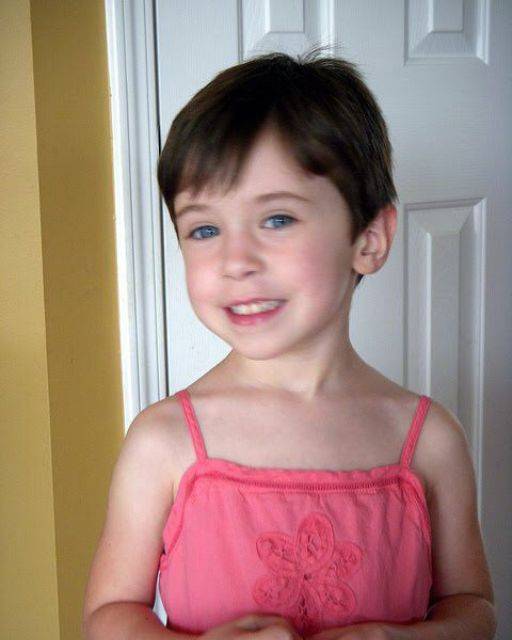Immediately—bright coral, spaghetti straps. Not hers.
Floral embroidery on the chest? I’d seen it before—but not in our laundry.
My niece just shrugged when I asked where her usual shorts had gone. “Swapped,” she said. That was it. Swapped.
Ms. Leena, her instructor, claimed not to notice a difference. But they monitor restrooms. Extra clothes are kept in labeled Ziplock bags. We always pack a backup pair of shorts with my mom’s old trick: her name sewn in with birthstone-colored thread.
Now none of them are in her cubby. Just a small velvet pouch tucked in the corner. Easy to miss.
Inside: folded pink stationery sprinkled with gold stars. A child’s messy but intentional scrawl across the page.
“She wanted to be princess today. I consented.”
No name. No context. Just that.
I showed it to my niece. She laughed and shrugged again, like it was no big deal.
“Who gave you the dress?” I asked gently.
She twirled her hair. “She did. From the pouch. Said it was my turn today.”
“Who’s she?”
“Hallway girl,” she said after a pause. “She always has gum.”
That chilled me. Gum? In preschool? We’d sat through those parent meetings—gum was practically contraband.
“Is she in your class?”
“Nope,” my niece said cheerfully. “She lives in the hall.”
The way she said it… like someone lives in the clouds.
I told my sister that night. She brushed it off—kids trade clothes all the time. But when I showed her the dress, her face changed.
“I’ve seen that flower before,” she murmured. “In high school. Some girl… Lydia.”
She examined the stitching in silence. I asked more questions. She didn’t answer. But I know when she’s lying.
The next morning, I watched every kid who walked into preschool. Scanned every hallway.
No coral dress. No gum. But at the very end of the west hallway, a door stood sealed with peeling red paint. A crooked sign: “Storage — Do Not Use.”
A girl stood beside it. Chewing. Too old for preschool—six, maybe seven. Pale yellow dress. Clashing sneakers.
She vanished when I blinked.
At pick-up, my niece came out in her usual shorts. Coral dress: gone. No explanation. No trace.
That night, I checked the velvet pouch again. A new note inside.
“Tomorrow is someone else’s turn.”
Different handwriting.
The next morning, I gave Ms. Leena the letter. She frowned, unsure whether my niece was playing some elaborate game. I could tell she didn’t quite believe that either.
She leaned closer. Said that sparkly shoes, books, extra clothing had been going missing. Nothing major—just odd swaps no one could explain.
I asked about the hallway girl.
Her expression shifted.
“We had a student named Lydia,” she said quietly. “Years ago. Before I started. She passed away.”
My stomach dropped.
“Choked on gum,” she whispered. “During nap time.”
I didn’t sleep that night.
The next morning, my niece begged to stay home. “She says it’s my turn forever now,” she whispered.
I told her she didn’t have to play anymore. That I’d take care of it.
I waited in my car after drop-off. Watching the hallway from afar.
After an hour or two, I saw her. A child walking toward the red door. Wearing different shoes. Unfamiliar.
She slipped inside.
Something pulled me from the car. I entered the school, passed the front desk, walked the long hallway.
The storage door cracked open.
Inside: dim light, dusty shelves, forgotten toys. At the back—a soft glow.
A girl sat cross-legged, sorting through old clothing. The coral dress. Sparkly heels. A unicorn backpack I recognized from last fall.
She looked up.
“You’re not supposed to be here,” she said.
“Neither are you,” I answered.
Her head tilted. “I help. I let them be special.”
The room smelled faintly of peppermint. A broken music box played somewhere in the dark.
“What do you get from it?” I asked.
She blinked slowly. “To be remembered.”
She pulled out shoes labeled “Lydia” in faded marker.
“I just want to play,” she said.
Something inside me softened.
“You can’t keep taking from them,” I said gently. “That’s not how play works.”
She clutched the shoes. “I didn’t mean to stay. I got lost.”
I sat beside her. “We all get lost sometimes. But you can go home.”
“How?” she asked.
“Let go,” I whispered.
She shook her head at first. But then, one by one, she placed the shoes back in the box.
Then the pouch.
Finally, the coral dress.
The light flickered. The room seemed to exhale.
And she was gone.
I took the box. Told the school I found it in the janitor’s closet. No one questioned it. But Ms. Leena’s glance told me she knew.
The next day, my niece was back to herself. No more velvet bag. No more notes.
We washed everything over the weekend. Labeled it. Donated it.
My niece tucked a short note into the coral dress pocket.
“You can be remembered in good ways, too.”
Weeks passed. No more strange clothing. No more hallway sightings.
Then one Friday, my niece brought home a crayon drawing. Three smiling girls holding hands on the playground. One wore a yellow dress.
“Who’s this?” I asked.
She shrugged. “Someone who was sad. Now she’s okay.”
I almost believed her.
A month later, the school wrote to say they were tearing down the old hallway for a reading nook. Workers found piles of forgotten toys, drawings, and a single shoe faintly marked “Lydia.”
They asked for donations for the new reading space.
My niece suggested her favorite book—the one where the girl shares her crown.
She taped a note inside:
“For the girl who made me princess.”
That’s how we remember Lydia.
Not as a ghost.
But as a little girl who just wanted to be seen, and play.
